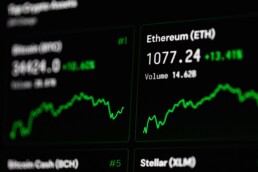Renting or buying a house?
Renting or buying? Buying or renting?
And is renting really a complete waste of money?
In fact, the question that many are asking is "why pay the rent to the homeowner if I can pay for my home directly?"
To answer this question we must start from the beginning of the question and analyze the situation one piece at a time. And the only thing that makes sense is to analyze the problem over the long term.
First of all, renting a house is not throwing money into the fireplace, but it means having the use of an asset, in this case a house or an apartment. you are paying for the use of space that has no value to you in the future. This concept is basic, the value in the future is the key.
When you buy a house, and in almost all cases you are buying it making debt with a mortgage, you are borrowing money instead of a property and therefore you will pay the debt first, and then the interest for the use of this liquidity.
It should always be remembered that the money you borrowed today is used to buy an asset that will hopefully increase in value tomorrow.
It should also be considered that when the bank makes you a loan, you do not always have all the necessary money for the lend since not all banks provide 100% loans. So you will need to have a place to live for this period.
Another point to be sure of is what is expected in the short term. If you work in a company that sends you around the world, does it make sense to buy a house? If you change jobs and cities often, does it make sense to buy a house?
Being the owner of a house when you decide to take root and create a family is beautiful, but all the expenses that a property entails must be considered, therefore ownership taxes, purchase taxes, writing taxes, possible breakages of part of the house, checks to do at home, management fees and services without having to talk about house bills.
Those who are renting, on the other hand, have only the cost of the rent, insurance, various expenses and bills. And a much easier chance to move if the area gets worse or coexistence with neighbors becomes impossible.
Remember that needs and requirements change over the years, especially if the family grows with one or two children. Buying a house for two people and then having to live there in 4 is not easy but living there 35 or 40 years is certainly more economically viable than living in rent for the same time, especially because after 40 years you will be the owner of a property that will have a value.
But think about how many things can change or go wrong in 40 years, think about the divorce rate in your country.
The issue is difficult to tackle on a general level since each of us has different ideas, ways of life and expectations of the future. The real estate market is a market that must be studied and understood like any market and which is subject to price fluctuations. Many personal factors need to be considered before making the final decision.
Buying a house is simple, much more difficult is having to sell it. Always without falling into the debt trap
Shadow Banking
Today we are going to learn what is the Shadow Banking,
While the name may sound like something secret or illegal, this is just a parallel system to the traditional banking system for lending to individuals and businesses. Nothing illegal
Let's take an example to simplify the general explanation and understand how this system works, and probably you have used it without even thinking about it or knowing it. We use simple and easy numbers, purely for explanatory purposes.
Luca needs a loan to renovate his house, he goes to his bank and asks for an amount X. Luca is a good payer and therefore the bank would grant him the loan at a rate of 5% per year
However, Luca is not satisfied and remembers that a colleague suggested the CCX Finance. CCX deals with loans for real estate, cars, university and more.
Luca shows up in one of the CCX offices and the same loan for the same amount X would have a rate of 3.5%.
Luca as a customer does not find differences in the two loans, his only interest is in having the amount X he needs at the lowest available cost in the same agreed period of time.
So Luca for his convenience chooses to make a contract with the CCX
Here is an example of shadow banking.
The problem with shadow banking is how it is done or created. The banking circuit is created by people who save, and this savings goes into their current bank accounts. these current accounts are remunerated at 1%
the banks take this money, in customer accounts, and lend it to people like luca, at a rate of 5%. The difference between account yield and loan rate is the bank's business
CCX, on the other hand, having 200 Luca accessing his loan service, transforms the series of loans made to its customers into a derivative financial product.
Inside there will be loans whose risk will vary, as people will be different and with a different financial history, from the safest to the most risky.
Obviously the greater risk will be more rewarded by customers with a worse financial history
This financial instrument will then be bought by someone, in this case from a pension fund, as its return on the market makes it extremely attractive.
the currency of the purchase of the instrument will enter into CCX, which will thus be able to create other loans to others Luca, loans which will be transformed into derivatives and sold to other funds and so on without stopping
As far as banks are concerned, there are strict regulations, especially after the 2008 crash. These regulations serve as a safety net for the banks and consequently for its customers.
Let's talk about capitalization and specific rules to save your deposited money
In companies like CCX, on the other hand, there is no safety net or if there is, it is very thin given the low or almost no regulation
Over the various years, the percentage of loans disbursed by banks in relation to loans disbursed by shadow banking has increasingly been in favor of the latter.
The main risk arises in the creation of the derivative financial assets that have the debts inside. The economic situation could change to a worse one, These debts could become bad debt and therefore waste paper. The problem would spill over to those who are the holders of the derivative securities, which could go to a value equal to zero and therefore cause the funds that hold them to fail.
On the other side of the fence, in the event of a lack of financial stability, the funds interested in purchasing these derivatives could be scarce, putting companies like CCX in difficulty and causing their customers to return to the banking world for liquidity. necessary.
Hedge Funds
It is not uncommon to hear about hedge funds in the general media.
As the name implies, it is a fund involved in a hedging strategy.
We are talking about hedge funds because they are sometimes responsible for the volatility of the stock markets and because it is not always clear to the man of the street what they are, how they are composed and how they work.
Every hedge fund has rules that absolutely must be followed by the fund creator.
Regulations changes from country to country, such as the percentage of accredited investors or the type of investments that can be made. In addition, each fund has internal regulations to better manage its existence.
Generally, hedge funds in the Western world are allowed to purchase all financial assets recognized by their regulatory entities. But I advise you to specifically check the regulations of your country of residence in order not to make mistakes, all before investing.
It happens very often that the creator and manager invests a large chunk of their money in hedge funds. We are talking about a few million dollars, so as to push other investors to trust him given the particularly high personal figure involved.
After that there will most likely be a minimum amount to invest in the fund, which could be 500k or $ 1 million. in this way he will have a sufficient amount of liquid to invest and will have to deal with a low number of people, more easily manageable.
One of the rules that could be decided by the manager is to freeze the funds for a certain period of time which could be one or two years. In this way the manager will be able to invest liquidity in instruments that are also very risky without having problems of lack of funds due to an investor who wants to exit the fund.
Again for this issue, the manager could add to his rules a limited time window for the repayment of the capital added to the fund, such as once or twice a year.
The manager will have a large variety of assets to invest in, and to hedge the risk of these investments he will have hedging techniques by investing in derivatives and other instruments.
Obviously the manager can be both long and short on chosen assets, with a long investment and another short to cover the risk of the long.
the manager's remuneration will be a percentage, and may be a small percentage of the initial paid with a larger percentage of the gain achieved (in the order of 20, 30 or 40 percent)
Now, one of the riskiest moves that the manager can make is to take advantage of financial leverage, that is to ask for a loan from a bank. Let's assume a 5 to 1 leverage, with the manager having 10 million dollars under management and receiving 50 million from a bank, for a total invested liquidity of 60 million.
Both the financial leverage and the limited repayment window are the topics that can worry the most during a possible crisis or collapse of the markets
in fact, many investors may prefer to remain liquid and not invested in the market, so they may request redemption.
In this case, the fund should liquidate its assets very quickly.
This rapid liquidation would lead the market price to fall even further, especially if it is not just a fund that has to liquidate but a large number of funds.
You understand that the figures involved are very high and the speed of sale must be in line with the requests of the investors. The exit from the market, if done in a moment of panic, could also be very painful for the customer portfolio and even more so for the manager with the possible cancellation of the fund.
Exchanges and Order
Exchanges are the places where sellers and buyers meet together. This online sites are dedicated to the trading of various cryptocurrencies.
There are various types of exchanges, from the largest and most established with users from all over the world to the smallest ones that have a predominantly regional audience, as it happens in Japan and Korea.
The main features that interest us in an exchange are which coins are traded, the volumes and costs of the exchange and the safety of the sites.
Security as you well know is the fundamental factor of this world, and it weighs on your shoulders.
Exchanges work just like the stock exchange and manage your money. There is an order and sales book, you will have your own personal wallet but owned by the exchange. With some of these wallets you can even make loans to other users and get paid.
Now, there is no 100 percent secure exchange and these entities are in the hands of companies that obviously have profit as their reason for existence. Exchanges can be attacked by hackers or they can scam users, blocking funds and running away with money. For this reason you will have to leave as few coin or currency as possible on the exchange.
The largest exchanges are structured to resist to attacks and attempted robberies, but the provision is never too much. Each exchange takes care to put you in a position to protect your account, so don't be lazy and take the necessary actions to protect yourself
Moving on to coins, here we have another difference. In almost all exchanges bitcoin is traded but some small coins, with very low volumes and illiquid, are traded only on one or two exchanges in the world. This forces us, if we want to betray them, to rely on these actors who are unknown to most. In this case we will have to read the rules of these exchanges because they may not allow the exit of funds below or above a certain value, or forcing us to go through the kyc procedures and this may take a long time to be resolved.
The volumes of an exchange are an important signal, meaning that that data coin on that given market is very or little sold and in demand. Many volumes equate to many buyers and sellers, therefore a market rich in money that is defined as liquid. Small exchanges with low volumes are therefore illiquid.
Each exchange has usage costs, check them before deciding on which exchange to operate more often.
Also remember that although bitcoins are all the same, on different exchanges they are sold at different prices, giving rise to arbitrage phenomena.
When you go to trade on exchanges, you will have different types of orders to buy or sell. Let's see some of them.
Let's start with the simpler than the market order or market order. In this specific order, the purchase takes place at the sale price of the lowest asset and the order is not stopped until the requested quantity is reached.
Let's take an example. I purchase 20 ethereum with a market order. At that moment on the book, the first lots on sale at the lowest price will be 10 ethereum at $ 200 and another 20 at $ 210.
With this order I will buy 10 ethereums for $ 200 and another 10 ethereums for $ 210. With this order, the price does not matter, but the quantity indicated.
In the case of a sales order of this type, the behavior is the same.
Another kind of order is the limited order. In this case, when we go to create the purchase order, we enter the quantity and the decided price. In this case we can put a price slightly below that of the moment or much lower, it all depends on how we see the situation on the market. This type of order could be either unfulfilled or partially filled.
Again using the example above, if we placed an order for 20 ethereum at $ 200, with a current price of $ 210, we would have to wait for a descent to ensure that the order is executed. It could happen that only 5 ethereums on the market sell for $ 200, so our order would be partial.
Also in this case when the behavior of the order in the event of a sale is the same. Price and quantity will be fixed and may not be reached.
A more complicated type of order is the stop loss order. This kind of order incorporates a sales strategy that wants to cut losses, a stop loss in fact. When the trend is uncertain you can use this order to protect yourself.
In case we still have an order like this for 10 ethereum at $ 200, with a stop loss at $ 190. If our long view is right, from our purchase at $ 200 ethereum it will go up in price and at the right time we will take profit. However, if we made a mistake and ethereum starts a negative trend, our order will automatically sell the position at 190 dollars, saving our account.
Viewed from the point of sale, this type of order can be changed with a higher price which turns into a take profit. If ethereum begins a slight positive trend we will be able to move the stop loss in equal to $ 200 or if the rise is more pronounced the figure could be even $ 210 and beyond. In this case we would continue to have a position within an uptrend that would be sold for a gain in the event of a reversal of the trend.
Being exposed in crypto consciously and knowing the dangers.
Why investing in cryptocurrencies? Why starting to study a whole new environment with a huge initial difficulty? Why endanger that part of our assets that we have decided to allocate in cryptocurrencies?
Because yes.
We start from the idea that the world of investments as a whole is huge, and that Blockchain is currently the most recent technology and with the greatest growth push on the planet. Investing in blockchain projects is within everyone's reach, so even less capable investors with little experience or just beginners can invest. Investors of this type are the ones who will make the biggest mistakes so they need to understand the various projects and decide if they are worth our money.
If you remember the dotcom bubble, you could have invested in amazon or google or other realities of the early internet era ... But we only remember those who survived and we forgot all those realities that had stratospheric growths in a few weeks, and then see your stock value crash to the downside and disappear from the market. But only from the market, not from the sad and shocked minds of their investors ...
Let's forget for a moment Bitcoin and Ethereum which are now the two champions of the crypto world, the universe of Blockchain projects is huge and varied.
It should be immediately understood that there are many projects that are or have turned out to be exclusively scams or clones of other more noble and serious projects, which with scammy name and various tricks have simply tried to drain funds from inattentive and inexperienced investors.
Currently over 90 percent of blockchain projects launched and funded have failed, most without writing a single line of code. Aware of this, and also aware of the fact that the Blockchain is the future and it is time to be inside it, as investors we must ask ourselves some simple and basic questions to understand where to put our funds.
Let's start with the first doubt to be eliminated, if the project we are evaluating creates a product or service that solves a real problem and if this is in line with Blockchain technology. Not all projects showed off as crypto friendly are suitable for the Blockchain. In case it is really suitable, and perhaps thanks to the blockchain it solves an unsolvable problem, well we have taken a big step forward. Those who do not respect this rule can be eliminated in a long-term investment perspective.
After that we will have to understand if the evaluated product really exists or is still under development or worse, it is only on paper and not even explained in a perfectly understandable way. In fact, a product under development takes months if not years to be launched on the market, extending the time for the return of the investment and therefore enormously increasing the risks for the investor.
After the product, the team should be checked. It is clear that the team must reflect experience in the sector to which the project belongs and the individual members must be experienced and competent, with a good curriculum. The team will then have to try to create partnerships with various companies already on the market. Experience, partnership and reputation are excellent indicators.
Another aspect to check is the type of token created to finance the project and offered to the public. There are utility tokens that offer a service linked to the project and whose value changes according to company and market trends. Otherwise, security tokens can be offered, which are backed by real company assets. These tokens are regulated and, in addition to offering an extra guarantee on the project, they carry rights on assets owned by the company.
Another point to check for the investor is the control of who issues the token, whether through an exchange or directly by the company in charge of the project. In the case of little-known exchanges with an unclear past, here is an alarm bell.
And this point makes us shift our attention to the dangers of investing in cryptocurrencies. Danger seen as the possibility of losing all our accumulated value.
First of all we need to define and differentiate the types of risks we run by investing in crypto.
We have two main type of risk, which are technical risk and financial risk.
When we talk about technical risk, we mean any problems we may have with wallets, exchanges and other technological issues.
The wallet is your property and it is your responsibility to manage it in the best possible way. One of the things that you cannot predict, however, is a possible bug that cause to hack the wallet and make you lose your funds. For this reason, the best choice to always make is to look for and use only the most successful wallets created by companies that invest a lot in security for their products. This choice is yours and it is your responsibility.
The same goes for the choice of the exchange on which to operate. An exchange can be attacked and its wallets can be hit and looted. But a large exchange has the funds and a strong need to protect itself, so it will always be state of the art in protecting its business and consequently its users. On the other hand, small exchanges do not always have these capabilities and are much more risky. The risk you take, however, can be rewarded since small exchanges often have coins that are not present on the larger ones and the movements can be more violent and faster, making you gain or lose more.
Leaving your coins on an exchange is a big risk. Remember that the coin that is on your wallet on the exchange is in the wallet of an exchange and not on your proprietary wallet. If something should happen to the exchange, you are almost certain that you have lost your parked coins waiting to be traded. In my experience it is better to spend something on movements from and outside your wallet. You run the same risk when you borrow your coins on an exchange that gives you this option. In this case, however, the risk is greater since your coins will be blocked for the entire time of the loan, not allowing you to quickly exit the exchange for whatever reason you want. It should also be considered that exchanges do not always allow immediate exits since the general timing is between 12 and 24 hours.
Scams are a full-blown reality of this world, we have made an article with the list of the most famous so we can teach you how to defend yourself. Learn more about Scam here.
Another problem you may find is the technological protection of the coins. Coins like Bitcoin and ethereum are difficult to attack, the development teams are very large and made up of capable programmers with very large budgets. On the contrary, coins just put on the market and therefore small and with few developers could have bugs that undermine their intrinsic safety. Choosing the coin to invest in is your responsibility, you take a risk in any case but it is a risk that you can manage.
Therefore the risk is reduced by using high quality wallets, exchanges of proven trust and coins among the most liquid. If you use the right things in the right way you have lowered the problematic risk.
Now let's face the financial risk.
The major problem encountered in the crypto market is the extreme volatility of prices, given by a combination of low market liquidity, thin books and a strong presence of whales that can move the market. However, this volatility is the key to making money. If we position ourselves in the right trend, our coin will obviously have a growth that is impossible on conventional markets.
But be careful, there are no guarantees regarding the growth of the price of a coin. It is not acceptable to buy something at random and abandon it, and then hope that in the following months or years it will increase in price.
The same goes for the underlying of each coin. The underlying of each coin is the development and use technology that it has in the real economy. If this technology is useless, wrong or totally non-existent, it is obvious that the value could collapse and reach zero.
There are Ponzi schemes like OneCoin which have no underlying and which are based only on the trust placed in them. When confidence collapses, OneCoin is like a fake baseball card. I only mentioned OneCoin for the trust issue, OneCoin is not a cryptocurrency.
Bitcoin has value because people believe in this technology and believe in the monetary design philosophy that underlies it. Bitcoin is also valuable because it is used according to its philosophy. The use of a coin, like the trust that the public has in it, creates value on the market.
There are some basic things that you must always remember.
By investing in anything, you are taking a risk. Risk that you can lower but never eliminate. Balance the risk on your profile, never overshoot it. Every mistake is always paid with your money.
In the long run there are no certainties about the value, while someone more famous and better than me said that in the long run we are all dead.
The risk of losing and zeroing your trading account is as real in crypto currencies as on any financial instrument. On crypto and derivatives, obviously all this can happen very quickly.
Anyone who promises you fast, safe and risk-free earnings is lying and wants to scam you. Say goodbye to this fool.
Blockchain protocols: investors point of view
In previous articles we have seen that there are different types of coins and therefore there are different ways to create them, or rather, to mine these coins. Learn more about mining here.
With different protocols for creating coins, from the investor's point of view we have another feature to be studied before making any purchase.
In fact, cryptocurrencies investors must analyze the blockchain protocol before investing in coins. Consensus algorithms can be the key to success with effects on inflation rates, security and the total value of the currency. Learn what is a Blockchain here.
But what is a Blockchain protocol?
A blockchain protocol is the common term for defining consensus methods.
Consensus methods are different systems created to reach consensus and validate transactions in a blockchain network.
Some require miners to hold coins, others require hardware to mine such as computers or graphics cards.
We know there are 3 types of consent which are:
Proof of work, proof of stake and delegated proof of stake
Let's briefly see some details:
Proof of work: from energy to value
Bitcoin and other coins use Proof of Work (PoW) as a consensus algorithm.
In the PoW consensus type, miners participate in the network by adding large amounts of computing power.
Big miners create physical mining rigs, consisting of several graphics cards in series, if not hundreds.
More powerful platforms equate to more chances of closing the next block and receiving the next block's reward coins.
Blockchain Transactions also include transaction fees.
So, in this case, the miner has to buy a large number of expensive graphics cards, spending a lot of money before earning a single bitcoin (or any other currency).
Miners can create a mining pool to combine their computing power and add more chances of receiving rewards.
In the proof of work economy Miners must spend thousands of dollars to build computer technology plants and pay high electricity bills to participate in networks of this type of blockchain otherwise, there would be no currency and no blockchain
In theory, these costs should add great value to a PoW coin
Miners don't want to sell coins below their mining cost
If you want to find out the minimum cost of a coin of this type, you need to look:
- The cost for miners to mine new coins (rig + electricity)
- The time to create a block and its reward
Let's take an example. If we have a PoW scheme with:
- Quick block creation times
- High reward
- Low total amount of money offered
Then the total supply will reach its maximum rapidly. As long as the demand for money is high, the currency should perform well. Otherwise you can see how the market reacts and wait until all the coins are created.
In another PoW scheme we have:
- Slow block creation times
- Low reward for blocks created
- high total money supply
In this example, the inflation rate is low due to lower demand. The coin will be profitable as long as it is new and scarce on the market.
Proof-of-Stake: no more platforms and computers
Proof of Stake or PoS does not require the purchase of mining rigs or the payment of huge electricity bills
The POS is a very different consensus model that allows all coin holders to contribute to the network and block building
You have to keep the coins in your wallet, activate staking and leave your computer on and you will receive rewards by acting as a miner
In this way, the Pos is a great incentive to hold coins also because the more coins you have, the more you contribute to the network and the more you have the chance to solve the next block.
So, in this case, miners have to spend a lot of money to buy coins to stake.
This is much simpler and faster than the proof of work protocol
The only available metrics are total supply, current supply, inflation rate, and current market price. So, you can analyze this market in a similar way to a fiat currency by measuring supply and demand.
DPOS Delegate proof of Stake with reliable nodes
This is a variation of the classic POS.
In this protocol, all coin holders elect delegates.
These delegates are the only ones authorized to verify and add new blocks to the blockchain.
In this case we can have a centralization of the first users with many coins. By the way, delegates need to be voted on by the community, so a good reputation and participation in the coin community is needed.
Lisk as an example has a Dpos consensus scheme.
As we said earlier for the consensus on the POS, if you want to be a miner you have to buy a lot of coins, but unlike the POS, in this case you have to trust the community. And you can't buy or sell trust.
There is no perfect system, but these 3 systems can solve the inherent control problems of a decentralized currency. It should also be noted that you have to consider the environmental problem of energy consumption among various factors.
How to buy a cryptocurrency
Today in this short article we are going to see how to buy a cryptocurrency in 3 simple steps:
Phase 1: Research.
Before doing anything you have to find out what you want to buy. That seems trivial, but the crypto market offers a disproportionate number of coins to buy. First of all we need to understand if we want to choose a coins with a glorious past or a coins that have just come out on the market. You have to make this research, which can also be based on suggestions given by the media or friends. Be careful in this case not to be fooled by possible scams.
Analyze the situation of the coin on a graphical level and everything that revolves around it.
Phase 2: SAFETY
Once you have chosen the coin you want to buy, the first thing to do is find a secure wallet and create it.
Phase 3: BUY the coin
Open the exchange and press the BUY button.
Now some recommendations:
Always do extensive research on the coin you are analyzing and if someone has suggested it to you, try to understand if it is a disinterested suggestion or not.
Obviously NEVER follow the hype. The hype invariably leads to entering at inflated prices and then losing a lot of money. Enjoy the hype by standing at the window.
Remember that wallets are programs to hold your coins so pay attention to the different types of wallets and different types of addresses. If you get the wrong address, you have lost your coins.
Learn more about safety here.
Airdrop and Bounty
FREE MONEY !!!
I'm sure I have your attention now. And yes, Airdrop and Bounty are free money, well almost.
What are these two terms and what do they hide?
They are neither more or less a method of advertising in the world of crypto
Let's start with the airdrop or launch of tokens from a plane, in fact an Airdrop is nothing more than a rain token delivery on a set of addresses. Generally, airdrops are created by subscribing to some forms, where in the simplest cases you simply enter your email and ethereum address up to more complicated cases where you even ask for a KYC.
The bounties, on the other hand, are a more complicated version of airdrop. The user is asked for a more articulated and complex social action or promotion, for a greater amount of tokens.
Examples could be writing an article or creating a video, or software checks and so on
The limit is only the imagination of the advertising creators.










